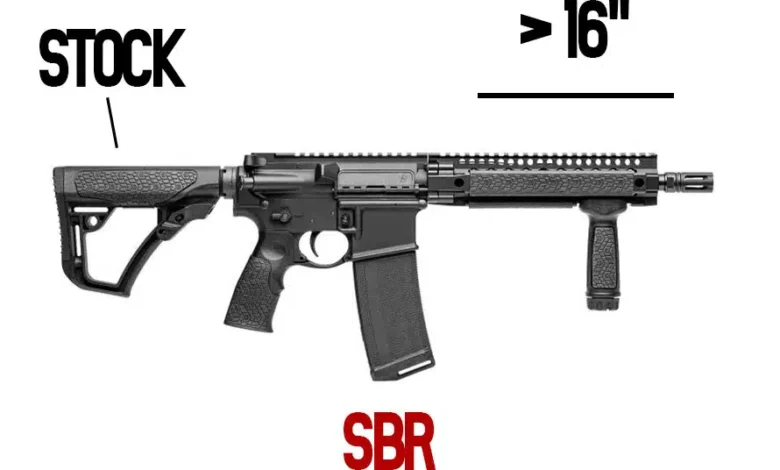Unlocking the Power: A Comprehensive Guide to AR-15 Magazines

1. The Evolution of AR-15 Magazines
AR-15 magazines have come a long way since their inception. Understanding the evolution of these magazines is crucial for both enthusiasts and newcomers to the AR-15 platform. The journey begins with exploring the origins of AR-15 magazines, which can be traced back to the iconic Stoner design in the 1950s.
1.1 The Origins of AR-15 Magazines
The AR-15 magazines owe their existence to the visionary work of Eugene Stoner. In the mid-1950s, Stoner designed the AR-10 rifle for the Armalite Division of Fairchild Aircraft. This innovative rifle featured a detachable box magazine, a rarity at the time. With the success of the AR-10, Stoner went on to refine his design and create the smaller, lighter AR-15.
The early AR-15 magazines closely resembled their predecessor, the AR-10 magazines. They were made of aluminum and had a standard capacity of 20 rounds. These magazines were designed to be reliable and lightweight, catering to the needs of military personnel.
1.2 Technological Advancements in AR-15 Magazines
Over the years, several technological advancements have transformed AR-15 magazines into versatile tools that cater to the needs of different shooting applications. One notable development is the introduction of high-capacity magazines. Originally, AR-15 magazines were limited to 20 rounds, but today, shooters can find magazines with capacities ranging from 30 to even 100 rounds.
Apart from increased capacity, advancements in materials have also shaped the evolution of AR-15 magazines. Polymer magazines have gained popularity due to their lightweight construction, durability, and resistance to corrosion. These magazines are also less prone to denting or warping, ensuring reliable feeding and longevity.
2. Understanding Magazine Capacity and Caliber Considerations
When it comes to AR-15 magazines, understanding the relationship between magazine capacity and caliber is essential. Both factors play a crucial role in the functionality and performance of the firearm. Let’s dive deeper into these considerations to make an informed choice.
2.1 The Impact of Magazine Capacity on Functionality
Magazine capacity refers to the number of rounds a magazine can hold. The choice of magazine capacity depends on the intended use of the AR-15. For home defense or personal defense, a standard capacity magazine with 30 rounds is often preferred. However, for competitive shooting or tactical applications, shooters might opt for high-capacity magazines to minimize reloads and increase their firepower.
It’s important to note that not all states or jurisdictions allow the use of high-capacity magazines. Therefore, it’s necessary to familiarize oneself with local laws and regulations before purchasing or using such magazines.
2.2 Choosing the Right Caliber for Your AR-15 Magazine
Choosing the right caliber for your AR-15 magazine is crucial for achieving optimal performance. The most commonly used caliber for AR-15 rifles is .223 Remington or 5.56x45mm NATO. However, there are also alternative calibers available, such as .300 Blackout and 6.5 Grendel, which offer different benefits for specific shooting applications.
Consider your shooting needs and preferences when selecting a caliber for your AR-15 magazine. Each caliber has its own advantages and limitations, such as recoil, range, ballistic performance, and ammunition availability.
3. Exploring Different Types of AR-15 Magazines
The world of AR-15 magazines is vast and offers a variety of options to suit different shooting requirements. Let’s dive into the different types of magazines available and explore their unique features.
3.1 Traditional Detachable Box Magazines
Traditional detachable box magazines are the most commonly used magazines for AR-15 rifles. These magazines typically feature a metal construction, with aluminum and steel being the primary materials. They are available in various capacities, from standard 30-round magazines to extended-capacity variants.
One of the notable benefits of traditional box magazines is their reliability. These magazines have been extensively tested and proven to feed ammunition reliably, even in adverse conditions. Additionally, they are compatible with most AR-15 rifles and are widely available in the market.
3.2 Drum Magazines: Beyond Standard Capacity
Drum magazines offer an elevated level of firepower by providing higher round capacity than traditional box magazines. These cylindrical-shaped magazines can hold anywhere from 50 to 100 rounds, depending on the specific model.
While drum magazines offer extended firepower, they do have drawbacks. The increased weight and bulk can affect the balance and maneuverability of the rifle. Additionally, drum magazines tend to be more expensive and may require more frequent maintenance to ensure reliable feeding.
3.3 Polymer Magazines: Lightweight and Durable
Polymer magazines have gained popularity in recent years due to their lightweight construction and durability. These magazines are made from high-strength polymer materials, making them resistant to impact, rust, and corrosion.
In addition to their durability, polymer magazines offer benefits such as smoother feeding and improved ergonomics. The inherent flexibility of polymer materials allows for increased design options, resulting in enhanced features like textured grips and translucent bodies for round count visibility.
4. The Pros and Cons of Steel and Polymer AR-15 Magazines
Choosing between steel and polymer AR-15 magazines can be a daunting task for firearm enthusiasts. Each material has its own set of advantages and disadvantages. Let’s explore the pros and cons of both options to help you make an informed decision.
4.1 The Benefits of Steel AR-15 Magazines
Steel magazines offer exceptional durability and ruggedness. They can withstand harsh conditions and rough handling without compromising their functionality. Their metal construction provides added weight, aiding in maintaining balance and controlling recoil.
Another advantage of steel magazines is their compatibility with a wide range of firearms. Whether you own a mil-spec AR-15 or a variant from another manufacturer, steel magazines are more likely to fit and feed reliably.
4.2 The Advantages of Polymer AR-15 Magazines
Polymer magazines excel in terms of weight reduction and corrosion resistance. Their lightweight construction makes a significant difference, especially during long shooting sessions or when carrying multiple magazines. Additionally, polymer magazines are less prone to denting or warping, enhancing their overall durability.
Furthermore, polymer magazines are often more affordable compared to their steel counterparts. This cost-effectiveness allows shooters to acquire additional magazines without breaking the bank.
In conclusion, understanding the evolution, functionality, and different types of AR-15 magazines is crucial for making an informed decision when selecting the right magazine for your needs. Consider factors such as magazine capacity, caliber, and material to ensure optimal performance and reliability. Whether you prefer traditional steel magazines or lightweight polymer options, there are a plethora of choices available to enhance your shooting experience with the remarkable AR-15 platform.
FAQ
Question: What materials were the initial AR-15 magazines made of?
Answer: The initial AR-15 magazines were made of aluminum.
Question: What led to the popularity of polymer magazines?
Answer: Polymer magazines gained popularity due to their lightweight construction and durability.
Question: What is the standard capacity of early AR-15 magazines?
Answer: The standard capacity of early AR-15 magazines was 20 rounds.
Question: Are high-capacity magazines legal in all states?
Answer: No, not all states or jurisdictions allow the use of high-capacity magazines.
Question: What factors should be considered when choosing magazine capacity?
Answer: The intended use of the AR-15 should be considered when choosing magazine capacity.
Question: What is the most commonly used caliber for AR-15 rifles?
Answer: The most commonly used caliber for AR-15 rifles is .223 Remington or 5.56x45mm NATO.
Question: What are the different types of AR-15 magazines?
Answer: The different types of AR-15 magazines include traditional box magazines, drum magazines, and polymer magazines.
Question: What are the advantages of steel AR-15 magazines?
Answer: Steel AR-15 magazines offer exceptional durability, compatibility with a wide range of firearms, and aid in maintaining balance and controlling recoil.



